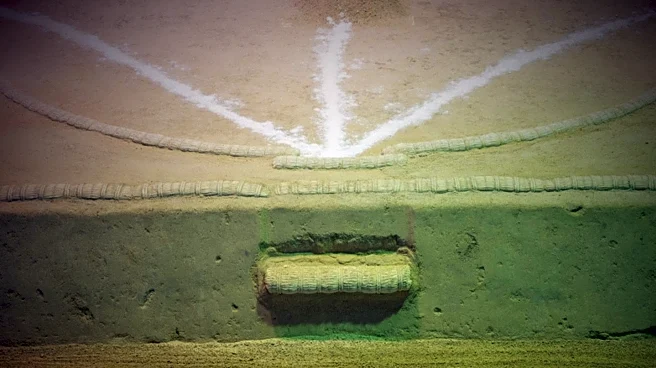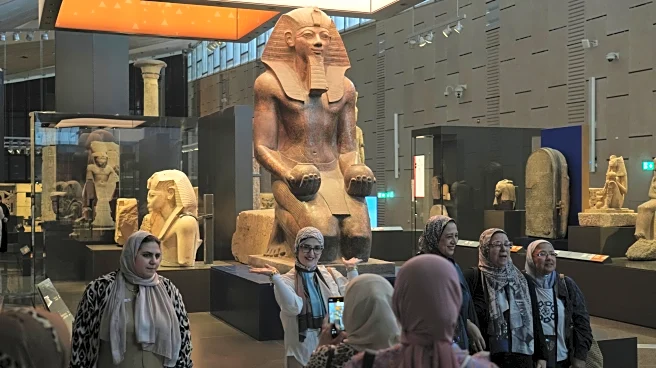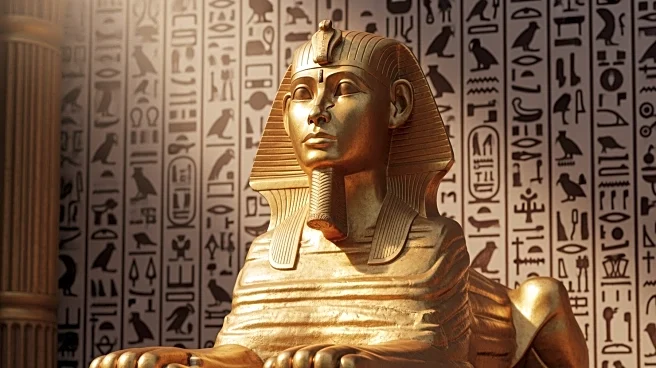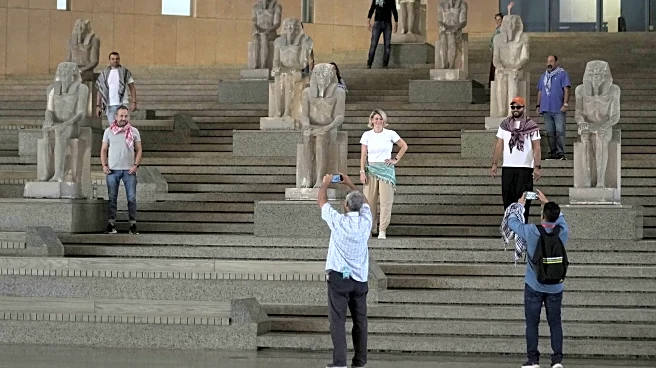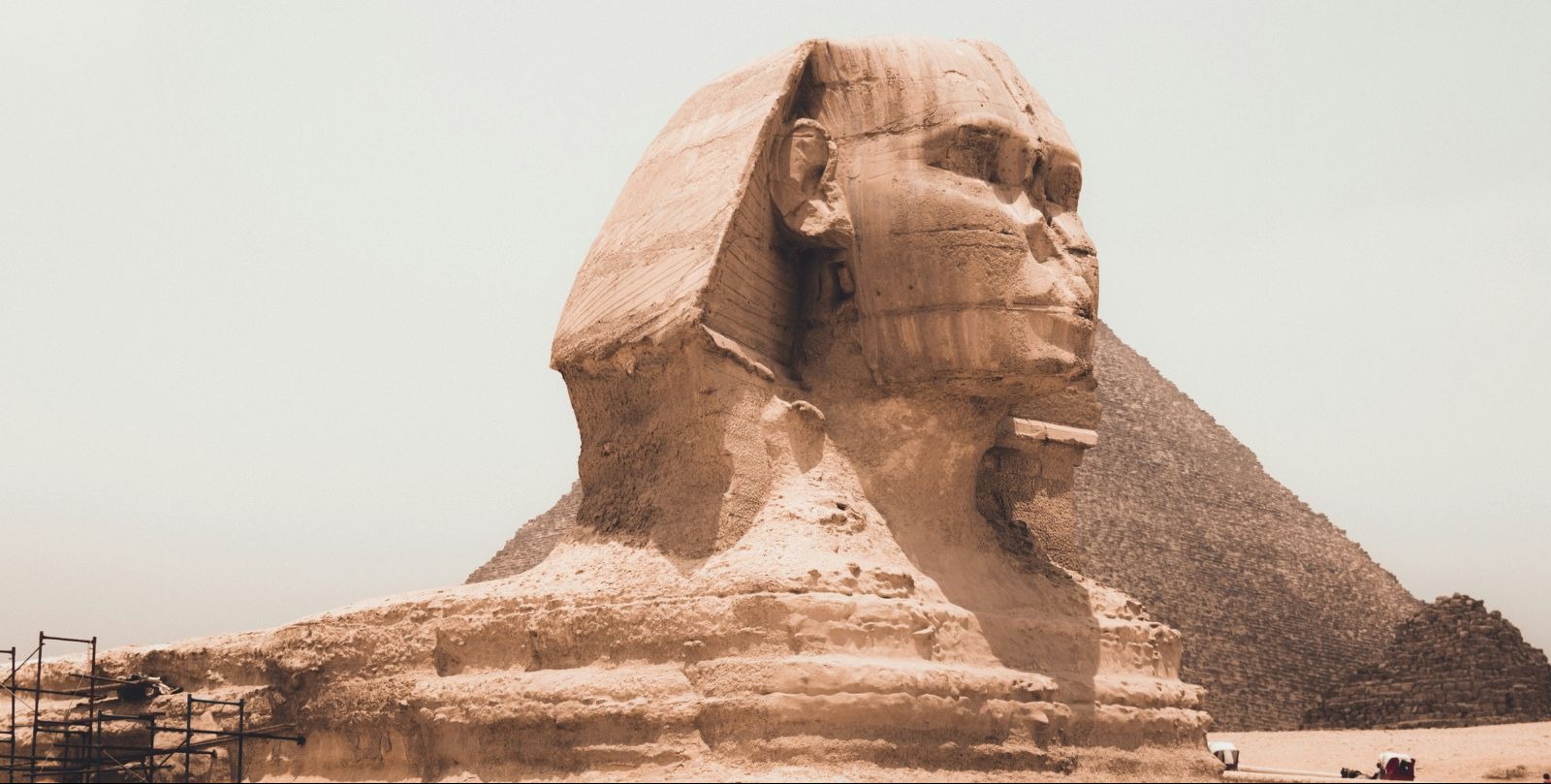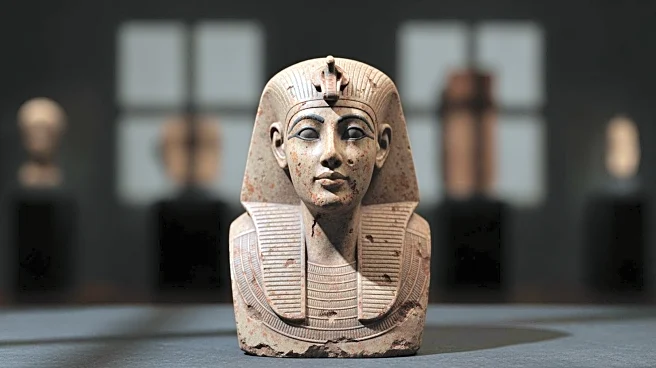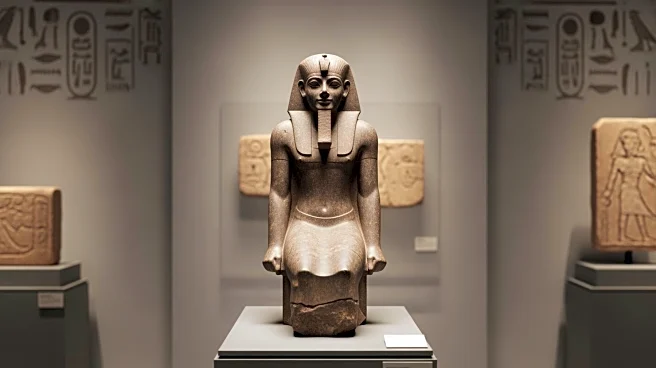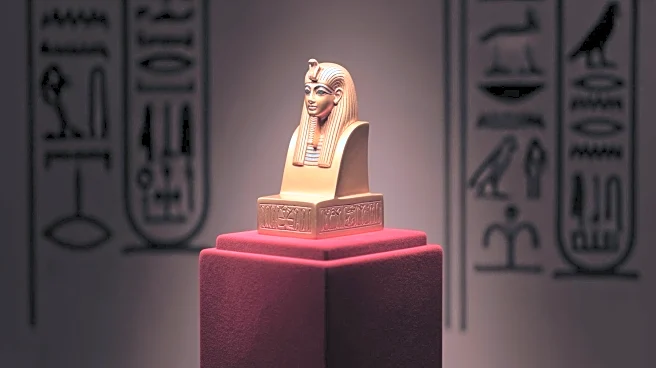What's Happening?
The Grand Egyptian Museum, located near the pyramids of Giza, has officially opened to the public after two decades of development and an estimated $1 billion investment. The museum, which spans nearly
500,000 square meters, houses over 100,000 ancient artifacts from Egypt's 30 dynasties. Key attractions include a 3,200-year-old statue of King Ramses II and the complete collection of Tutankhamun's treasures. The museum's design, by Irish architecture firm Heneghan Peng, features sand-colored concrete and translucent alabaster stone, with a main facade of frosted glass panels.
Why It's Important?
The opening of the Grand Egyptian Museum is a significant cultural and economic event for Egypt, expected to boost tourism and contribute to the country's economy. As one of the largest museums in the world, it positions Egypt as a major destination for cultural tourism, attracting visitors interested in ancient history and archaeology. The museum's extensive collection and modern design offer a comprehensive experience of Egypt's rich heritage, potentially increasing international interest and investment in the region's tourism sector.
